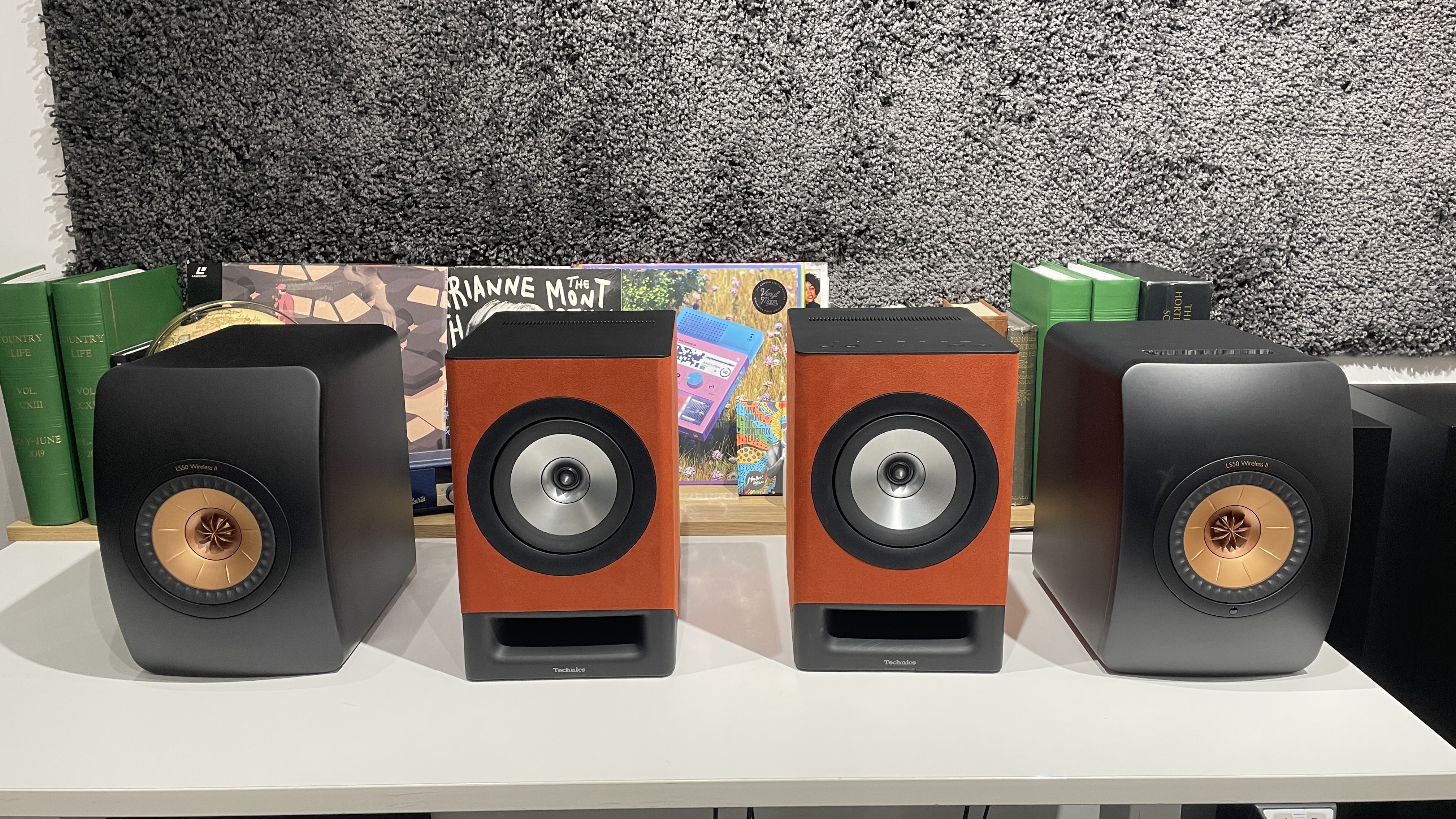
I want sonic excellence from my hi-fi system but in these trying times where space is at a premium and it can be tricky finding the real estate for a hi-fi rack complete with a tower of separates, I’ve had to cut my cloth, and the number of boxes I own, accordingly.
Gone are the days of being able to park a Roksan Caspian M2 CD player and M2 amplifier, alongside a pair of Spendor A5s (oh how I miss that system). In today’s new world of tiny living spaces I have had to compromise. But I can’t complain too badly as I’ve migrated to the KEF LS50 Wireless II. An excellent all-in-one solution which combines amplification and streaming smarts into a pair of standmount speakers.
It’s a great solution and I sometimes wonder why systems like this aren’t as common a sight as I would like them to be. So you can imagine my interest was piqued when Technics announced the SC-CX700, a speaker system that shares a similar look and feel and promises a lot of what the KEFs have to offer.
I couldn’t wait to spend a bit of time with the KEF rivals to see and hear what, if anything, they might be able to bring to the party. Here’s what I learned after spending some time switching between the two…
Improve the build quality
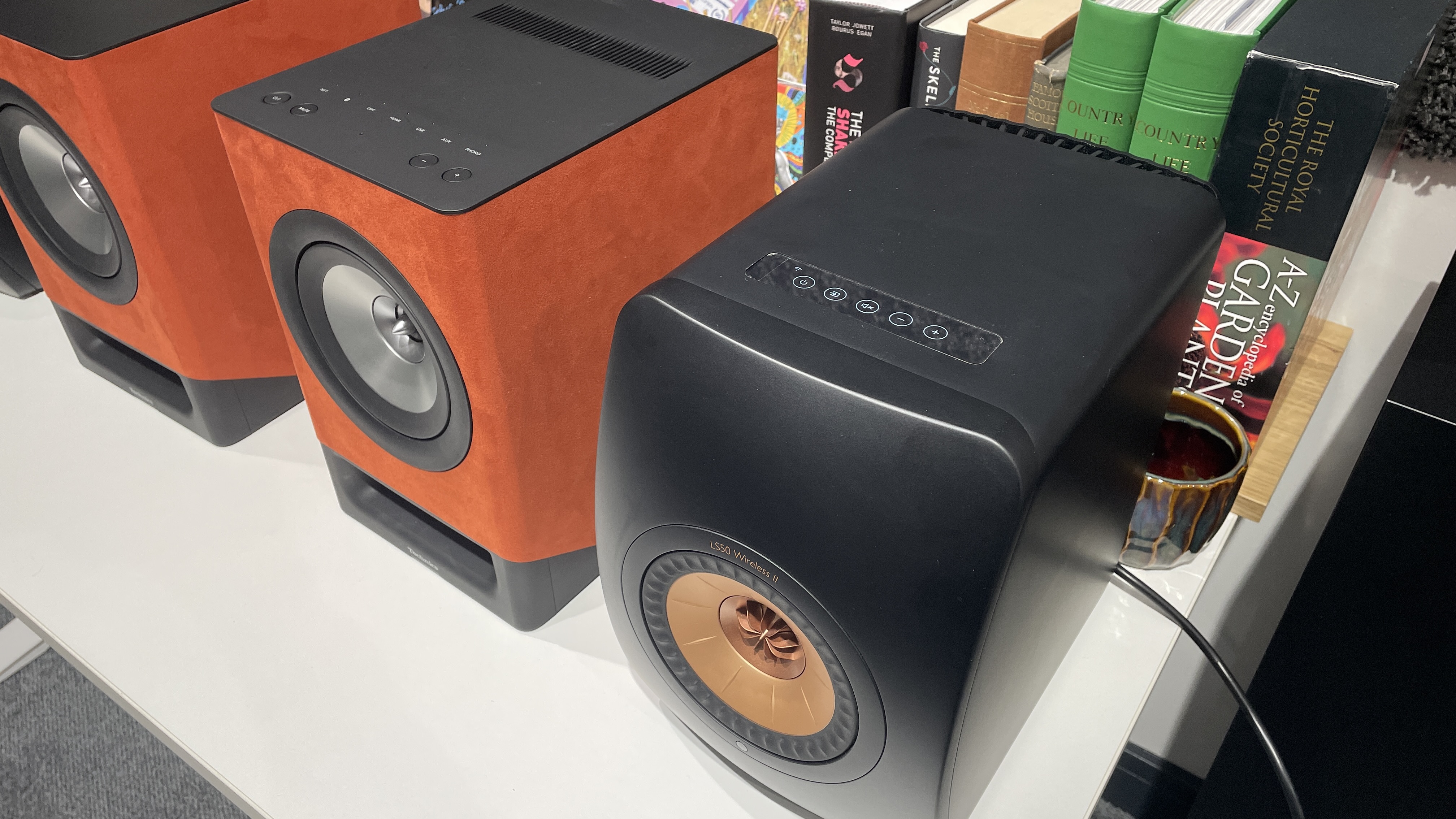
In my opinion, the Technics look eye-catching from a distance, especially in the Terracotta Brown finish of the pair we had in for review. The Dinamica™ microfiber material used for the side panels looks and feels premium and is surprisingly soothing to stroke.
But as you unpack them and place them side by side, compared with the KEFs the Technics look and feel like a cheaper product. Both speakers use a similar coaxial driver configuration, but KEF’s eye-catching Uni-Q unit with its tangerine waveguide give the LS50 Wireless II a shelf appeal which few rivals can match.
The materials used for the KEF cabinets feel sturdier and more premium. The metal heat-sinks on the rear have been attractively engineered, the top panels of each speaker in particular are much more solid than on the Technics, and the touch-sensitive controls are clearly defined and easy to see.
Contrast this with the Technics which feels like a cheaper product, with plasticky top panels and a rear profile that is cluttered with bolts; it all looks rather untidy.
Tweak their auto-calibration system
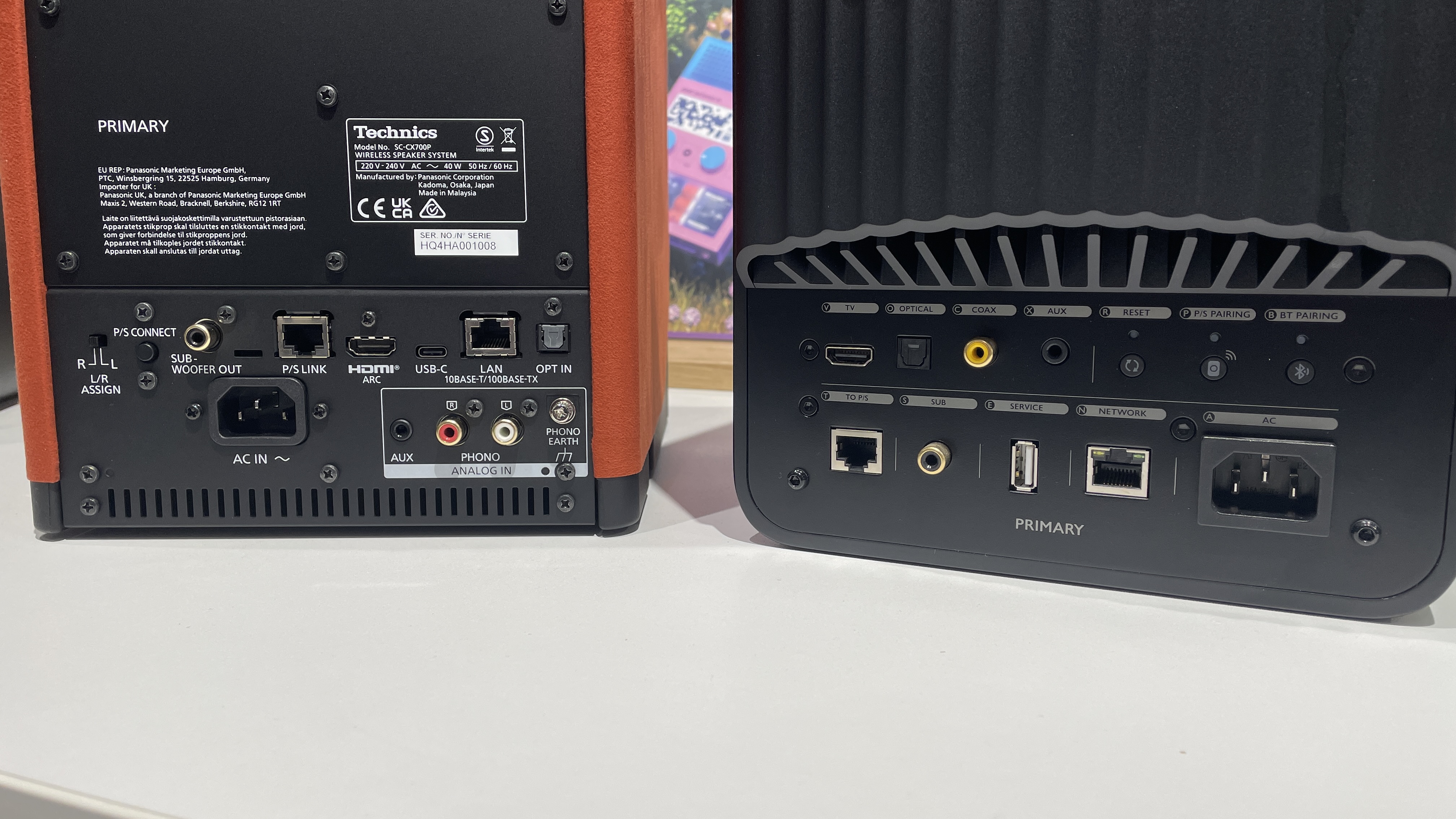
Technics has obviously put a lot of thought into how and where the SC-CX700 are going to be used. The menus give you a number of flexible positioning options which tweak the balance of the sound depending on where you have them.
Not only that, but you also have a couple of auto-calibration modes designed to take any hassle out of setting them up too. Ironically, I didn’t feel I needed them; if anything I found that when I used the auto-calibration modes they had a negative impact on sound quality, making it sound forced and artificially boosted.
There doesn’t seem to be the same natural, easy-going balance to the sound that there is when you’re using the basic preset modes. While I applaud the idea of having an auto set-up feature, I don’t think it’s executed as well as it could be, which makes it feel rather surplus to requirements.
The KEFs by contrast don't have any auto calibration but the set-up system is a relatively simple case of going into the KEF Connect app and manually adjusting settings for positioning. It’s straightforward and painless – you’re in and out in a minute or two.
And the control app could be slicker
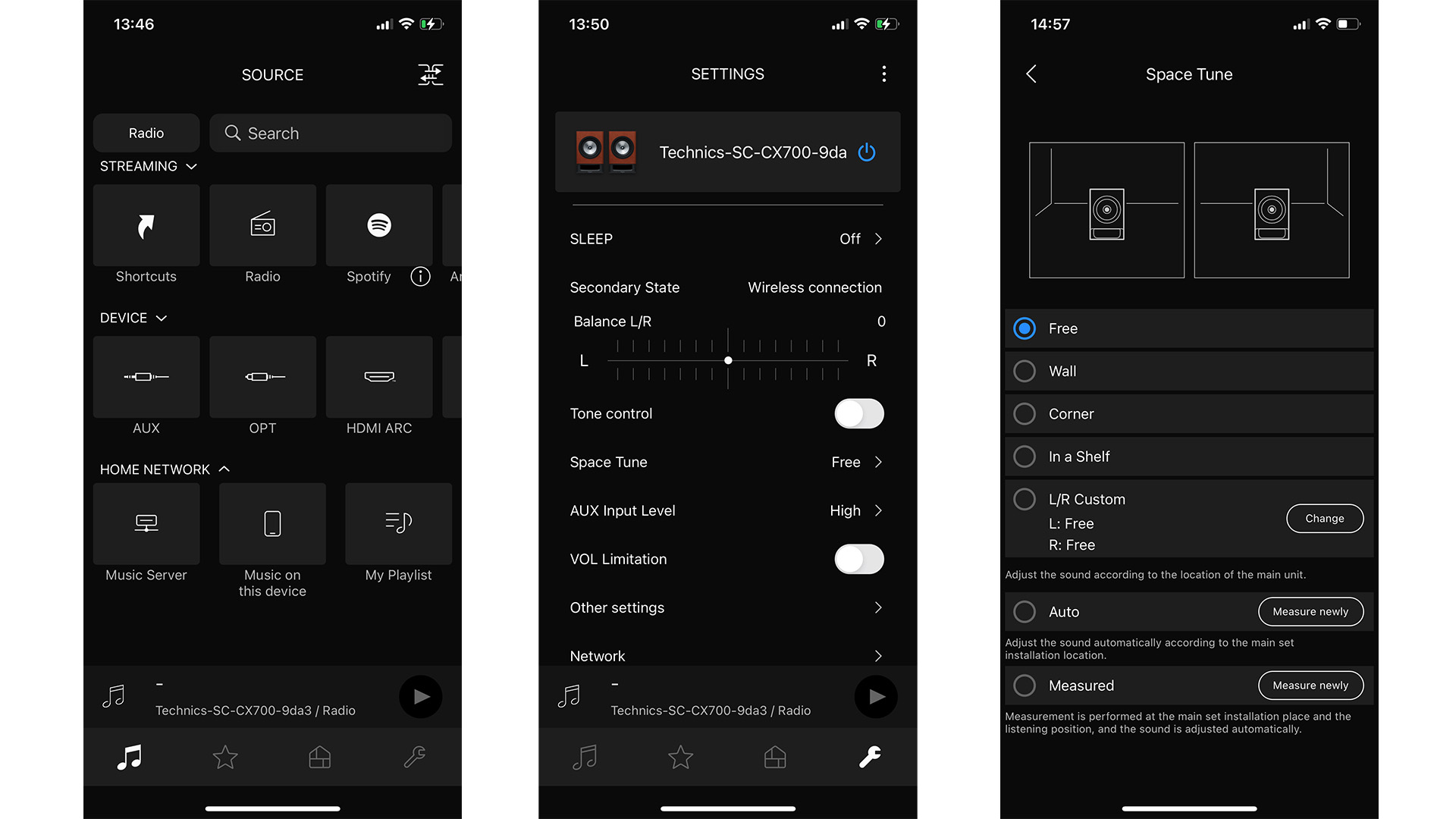
Controlling basic functions on the Technics can be done via the small remote which is supplied in the box; but for things such as set-up and navigating your way through certain music streaming services, you’ll need to use the Technics Audio Centre app.
It looks and feels virtually identical to the KEF Connect app used with the LS50 Wireless II, but with one slight drawback. When I used it, the lag I experienced when going from menu to menu was tiresome at best with a brief pause before loading each new menu page.
You can use Tidal Connect and Spotify Connect which will help reduce the length of time you spend in the app, but I use Amazon Music Unlimited for the vast majority of my streaming which means I have to allow the app to access my profile so that I must navigate all my music and playlists through it – which means I can’t really avoid the lag.
Combine this with a couple of other quirks such as the app feeling as though it doesn’t follow the natural menu path it should at times and it can make for a frustrating user experience
Improve the sound quality
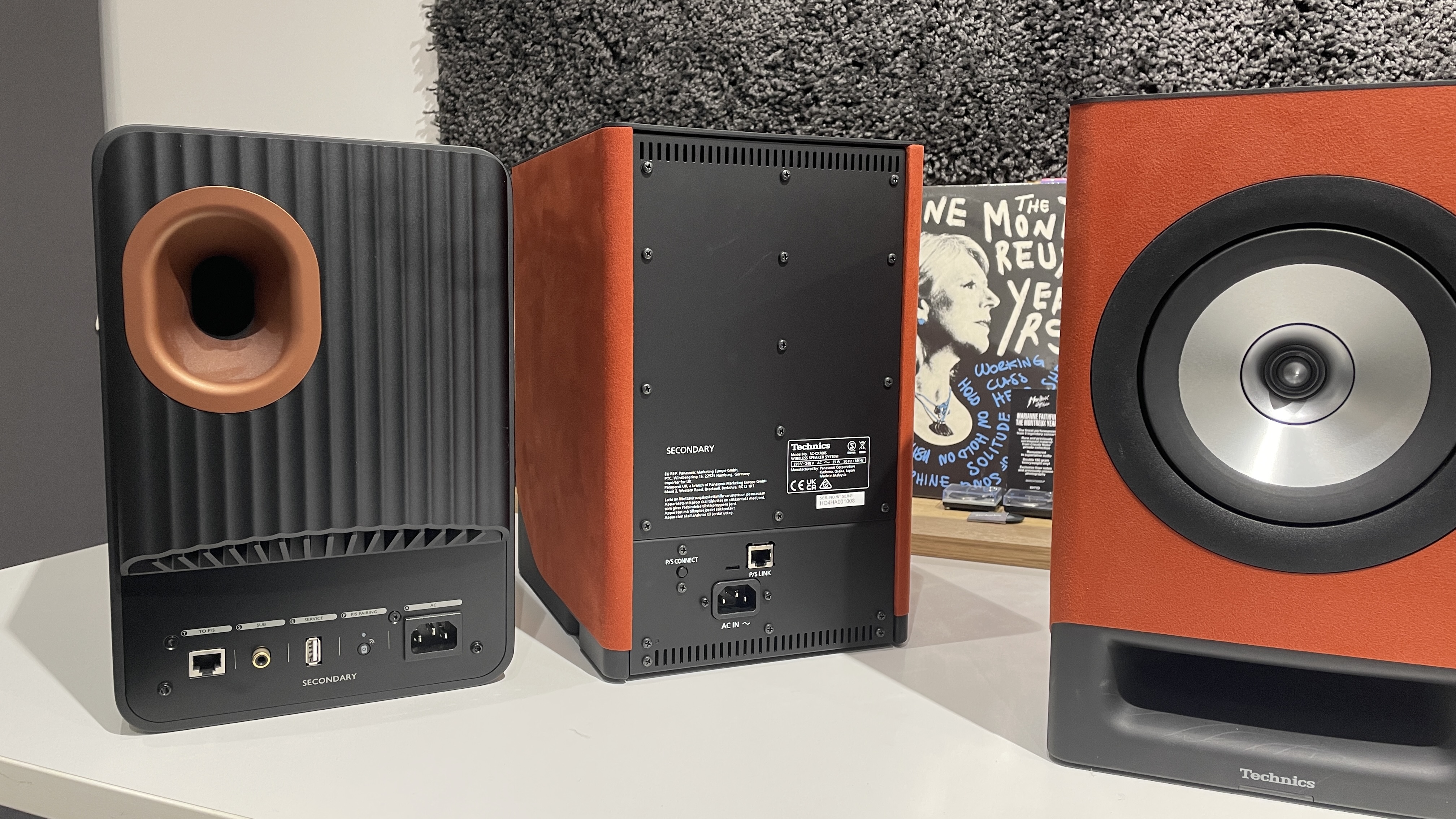
But the biggest area where I think Technics needs to up its game is its sound quality. It doesn’t take a huge amount of listening time with the SC-CX700 to discover that there’s something untoward happening in a certain area of the frequency range.
It’s somewhere around the lower treble and upper midrange where there’s an edgy coarseness that reveals itself. I think it’s especially apparent with vocals and strings which can sound quite rough around the edges and lacking in subtlety.
The KEFs by contrast are on a different level in terms of sophistication and refinement. Instead of jarring you with their presentation, they welcome you in with open arms and a fun, beautifully balanced and natural soundstage brimming with detail and dynamics. I don’t think the Technics can compete with the sense of enjoyment you get from the LS50 Wireless II when listening to a wide range of different music types.
Part of the Technics problem also lies in their dynamic abilities. For all their impressive bass power (which we’ll come to in a second), they don’t seem able to match the ebb and flow, the rise and the fall of the KEFs.
Their lack of communication of low-level and high-level dynamic shifts means they don’t hold your attention for as long as the KEFs, nor does your attachment to the speakers grow in the same way.
But… the bass performance is superb

One area where Technics doesn’t need to focus its attention is on the bass prouced by the SC-CX700. Given the size of the speakers, they punch well above their weight, with seriously powerful, full-bodied bass that manages to hit extremely hard and go deep too.
The first time I heard them drop basslines from a few of my favourite test tracks, I was honestly blown away. They even make the KEFs sound a little lightweight and lack authority.
With the SC-CX700, it’s not unruly and uncontrolled bass, either. There’s definition and texture to bass notes too, with the Technics able to draw clear outlines and differentiate between the size and shape of different notes.
If Technics can maintain the level of bass performance, smooth out those rough edges in terms of both the user experience and the sonic coarseness and inject a bit more dynamic thrust into a sequel (if one happens to be on the road map) it should have a much better chance of taking the fight to the KEFs.
MORE:
Read our KEF LS50 Wireless II review
And our Technics SC-CX700 review
Check out our list of the best active speakers you can buy right now







